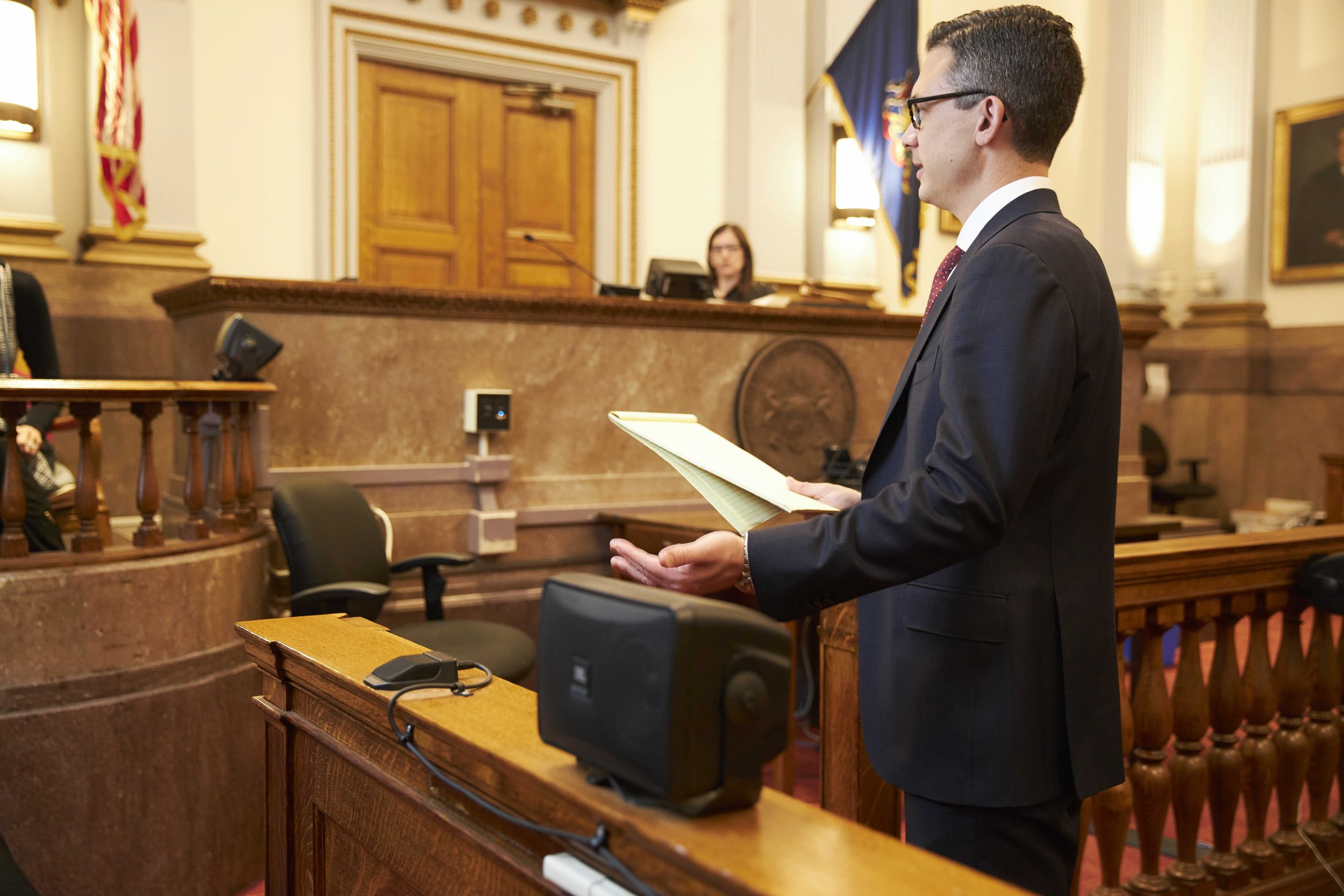Leading Federal Appeal Attorneys: Your Partners in Browsing the Appeals Refine
Wiki Article
Demystifying the Refine of Federal Appeals: What You Required to Know
Navigating the complex world of federal allures can typically feel like traversing uncharted waters for those unfamiliar with the procedure. Understanding the subtleties of appellate court territory, the details of filing a notification of charm, offering a compelling brief, and making a convincing oral argument are important components that can substantially impact the outcome of a situation. By untangling the layers of intricacy surrounding government appeals, people can obtain a more clear insight right into the devices that regulate this critical stage of the legal system.Recognizing Federal Appeals Process
Delving into the complex world of the federal appeals process reveals a structured and methodical trip through the judicial system. Federal appeals function as an important device for assessing decisions made by lower courts. Understanding this procedure is essential for anyone entailed in lawful process at the federal degree.The process typically starts with a celebration dissatisfied with a lower court's ruling filing a notification of charm. This activates an evaluation by a greater court, where a panel of judges evaluates the legal disagreements presented by both celebrations. Briefs describing the legal reasoning behind each event's placement are sent, and dental arguments might be heard to clear up intricate problems.
The appellate court's choice is based on a complete examination of the lower court's proceedings and the debates offered. The judges do not concentrate but review facts on whether lawful errors occurred that impacted the lower court's choice. As soon as the appellate court gets to a choice, it can affirm, reverse, remand, or modify the reduced court's ruling, supplying quality and finality to the legal disagreement. Understanding this process is important for navigating the intricacies of federal appeals effectively.
Appellate Court Territory Explained
As we progress from comprehending the government allures procedure to studying the details of appellate court jurisdiction, a fundamental facet emerges concerning the authority and restrictions of these higher courts in the lawful landscape. Appellate court jurisdiction refers to the extent of cases that a particular appellate court has the power to decide and examine upon. Unlike high court that hear cases for the very first time, appellate courts are restricted to examining decisions made by reduced courts. These choices can consist of judgments from both state and federal courts.Appellate courts have jurisdiction over certain kinds of instances, generally those involving legal mistakes, procedural concerns, or concerns of legislation instead of factual disputes. The jurisdiction of appellate courts is usually outlined in laws and legislations that govern the court system. Understanding appellate court jurisdiction is critical for parties associated with the appeals process as it establishes whether a situation is eligible for evaluation and the degree to which the appellate court can interfere in the lower court's decision.
Declaring a Notification of Charm
The initial action in commencing the government appeals process entails filing a Notice of Allure with the appropriate appellate court. This important record formally informs the court and the other events involved in the situation that the appealing celebration means to look for a testimonial of the lower court's choice. Submitting a Notification of Allure is a stringent step-by-step demand that establishes the appellate process in movement.
When preparing the Notice of Appeal, it is necessary to make certain conformity with the specific guidelines and guidelines of the appropriate appellate court. federal appeal lawyers. The record must normally include information such as the case name, the reduced court's name, the date of the judgment being appealed, and a concise statement suggesting the grounds for the allure

Briefing and Dental Debate
In the appellate procedure, offering composed briefs and involving in oral arguments play crucial duties in advocating for the appealing party's position before the appellate court. Briefs are thorough lawful documents that outline the celebrations' disagreements, lawful authorities, and evaluation supporting their settings. These written entries supply the court with a detailed understanding of the facts of the case, the relevant law, and why the appealing event thinks the reduced court's choice need to be rescinded.Adhering to the entry and review of the briefs, oral debates use the celebrations an opportunity to additional clarify their placements, address any inquiries the appellate courts might have, and highlight vital factors from their created briefs. Oral debates are an opportunity for the lawyers to encourage the courts through spoken campaigning for and responses to queries from the bench.
Both the created briefs and oral debates are critical components of the appellate process, permitting parties to offer their situation completely and compellingly prior to the appellate court. - federal appeal attorneys
Obtaining the Appellate Court Decision
Upon completion of oral arguments and entry of composed briefs, the following essential phase in the appellate procedure involves awaiting the crucial ruling from the appellate court. This period of expectancy can be loaded with a mix of anxiety and wish for parties associated with the charm. The appellate court's decision is commonly supplied in a written layout and describes the court's verdicts on the legal problems presented, the thinking behind their decision, and the judgment made. The time frame for getting the appellate court's decision can vary, but courts make every effort to supply prompt resolutions. As soon as the decision is issued, celebrations must very carefully evaluate the court's judgment to comprehend the end result and identify any kind of further actions that might be required. Whether the appellate court attests, reverses, or remands the reduced court's decision, comprehending the implications of the ruling is crucial for all events associated with the appellate process. As a result, promptly evaluating and understanding the appellate court's decision is vital in browsing the following action in the lawful process.Final Thought
Understanding the appellate court territory, filing a notice of allure, preparing briefs, and presenting oral arguments are all important parts of this process. Inevitably, receiving the appellate court decision can offer quality and resolution to legal conflicts.As we progress from comprehending the government charms process to dissecting the intricacies of appellate court territory, a basic element comes to light relating to the authority and limitations of these higher courts in the lawful landscape. Appellate court territory refers to the range of cases that a particular appellate court has the power company website to make a decision and evaluate upon. Unlike trial courts that listen to situations for the first time, appellate courts are restricted to examining decisions made by lower courts. Recognizing appellate court jurisdiction is essential for parties entailed in the charms process as it establishes whether a situation is eligible for testimonial and the degree to which the appellate court can interfere in the reduced court's decision.

Report this wiki page